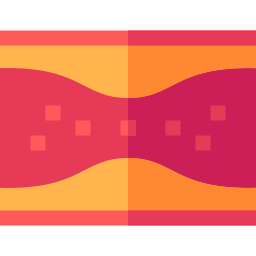![]() Ischemic Stroke
Ischemic Stroke
The cerebrovascular accident (CVA) is the second leading cause of death in the world in people over 60 years old and the main cause of disability in Brazil in the adult population. It is worth mentioning that stroke can occur in any age group and, although more frequent, it is not exclusive to the elderly.
Ischemic stroke is the most common type of stroke and happens when one of the vessels in the brain becomes blocked, preventing the flow of blood and leading to the death of neurons in that region.
In ischemic stroke, the blockage usually occurs by a thrombus or a fatty plaque. The thrombus can be formed in the heart, as a result of an arrhythmia or other cardiac changes, or even in the artery wall associated with the presence of fatty plaques (atheroma), which are more frequently formed in the vessels of people with hypertension, diabetes, dyslipidemia. (high cholesterol) and/or smoking.
Recognition of stroke symptoms is essential for early institution of treatment to prevent sequelae.
The main signs associated with a stroke are:
- Loss of strength on one side of the body;
- Crooked mouth and/or difficulty speaking;
- Incoordination, imbalance;
- Double vision, visual loss;
- Loss of sensation on one side of the body;
- Sudden severe headache;
- Convulsion.
When any of these symptoms are identified, medical attention should be sought as soon as possible, especially in a hospital environment where there is a team trained in acute stroke care.
- Treatment options vary depending on the type of stroke and the time of onset of symptoms. For all types of stroke, admission to an intensive care unit or stroke units is the biggest reduction in mortality;
- For ischemic stroke, there are therapeutic options to remove the obstruction of the cerebral vessel, but for this it is necessary that the treatment be instituted early;
- In the first 4 and a half hours of the onset of symptoms, it is possible to administer, when there are no contraindications, a medication that dissolves the thrombus (chemical thrombolysis);
- In the first 6 hours, and in rare cases up to 24 hours, it is possible to perform a procedure to remove the thrombus from inside the vessel (endovascular – “mechanical thrombectomy”).
Stroke prevention is based on guidelines for healthy lifestyle habits and control of cardiovascular risk factors (high blood pressure, diabetes, high cholesterol, smoking, etc).
Regular physical activity, healthy eating and less stressful life are guidelines for all of us, from the youngest to the oldest. For those who have already been diagnosed with some cardiovascular risk factor, rigorous treatment of these risk factors is essential.
What causes ischemic stroke?
Ischemic stroke occurs when one of the vessels in the brain is blocked and, therefore, blood is unable to pass through and supply brain cells with oxygen and nutrients. This obstruction can happen in two different ways:
- Blockage by a clot: This is more common in the elderly or people with heart problems, especially atrial fibrillation.
- Vessel narrowing by fatty plaques: it usually happens in people with uncontrolled high blood pressure, smokers and diabetics.
What is the difference between ischemic or hemorrhagic stroke?
Unlike ischemic stroke, hemorrhagic stroke is rarer and happens when a vessel in the brain ruptures leading to bleeding and clot formation within the brain.
Hemorrhagic stroke is more common in people with uncontrolled high blood pressure, who are taking anticoagulants, who have brain aneurysms, arteriovenous malformations or other vascular diseases of the brain.
What are the risk factors for ischemic stroke?
Smoking, high cholesterol and triglycerides, physical inactivity and cardiovascular diseases such as high blood pressure and cardiac arrhythmias are the main risk factors.
How to prevent?
- It is essential to control blood pressure, diabetes and blood cholesterol levels;
- Patients who have any heart disease should undergo regular medical follow-up;
- Everyone should practice regular physical exercises guided by a professional and maintain a balanced diet.







